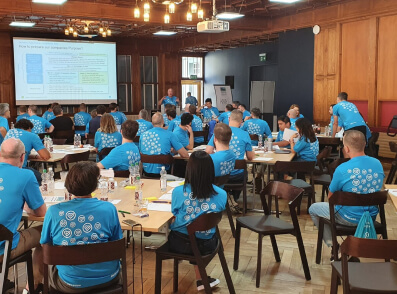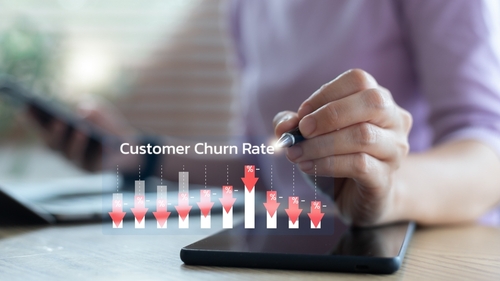要点
- Insurance data holds significant value that organizations can leverage to drive revenue, improve services, and gain competitive advantages.
- Insurers can monetize data through internal strategies, like refining underwriting and pricing, and external strategies, such as offering anonymized insights or analytics services.
- Techniques like data-driven underwriting, predictive analytics, and data partnerships enable monetization while maintaining ethical and regulatory compliance.
Data Monetization in Insurance
The health and life insurance industry is changing how it uses customer data. Leading companies now turn data into new revenue opportunities rather than just using it for record-keeping and basic risk assessment. This strategic approach creates business value through improved pricing, streamlined operations, and competitive market advantages.
This shift marks a fundamental change in how insurers view their data assets. Companies that build effective systems to capture and analyze health information gain significant market advantages. Those using only traditional methods face increasing pressure from data-driven competitors who generate new revenue from their information resources.
Insurance Data as a Strategic Asset
Insurance companies have long used customer data in their operational frameworks. These applications centered primarily on actuarial modeling to establish baseline risk classifications, determine policy eligibility, and calculate premium structures across broad segments. These conventional approaches relied on limited data inputs—primarily claims history, mortality tables, and basic demographic information—analyzed at periodic intervals using standardized methodologies.
Additionally, insurers maintained customer records for regulatory compliance and transaction processing. While these applications supported core business functions, they operated primarily as operational necessities rather than strategic value drivers.
In the new insurance landscape, leading insurers use data strategically to drive revenue growth, operational efficiency, and competitive differentiation.
Data Monetization Strategies in Health and Life Insurance
Forward-thinking insurers use these strategies to unlock new revenue streams, streamline processes, and deliver better service.
1. Dynamic Risk Assessment and Real-Time Pricing
Traditional risk assessment methods rely on limited data, leading to inefficiencies in pricing and underwriting. Many insurers still use outdated risk charts that fail to account for key lifestyle factors, resulting in premiums that don’t always reflect actual health risks.
Advancements in risk modeling have changed this approach. Platforms like the dacadoo Risk Engine analyze between 4 and 90+ data points to generate over 70 health indicators in seconds, achieving an accuracy rate of 91.6 % (ROC-AUC). This enables fluidless underwriting, which removes the need for invasive medical exams in many cases.
By leveraging real-time data and continuous health insights, insurers can move toward fairer, more dynamic pricing models. Learn more about how data-driven underwriting is transforming risk assessment.
2. Preventative Claims Management Through Health Data
Claims payments represent a significant expense for insurers, with U.S. commercial casualty insurance losses growing at an average annual rate of 11% over the past five years, reaching $143 billion in 2023, according to Swiss RE. A substantial portion of these claims is linked to modifiable lifestyle factors that contribute to the global disease burden.
By leveraging predictive analytics and digital health engagement platforms, insurers can identify patterns that indicate rising health risks. For example, increased reports of stress-related symptoms in digital health tracking tools might suggest an elevated risk of future claims. Rather than waiting for claims to materialize, insurers can refine risk models, adjust pricing, or implement incentives that encourage healthier behaviors.
Leading insurers already use value-based insurance design (VBID) strategies, such as reducing premiums for members who participate in wellness programs or making preventive care more accessible. These strategies not only help mitigate risk exposure but also contribute to better policyholder health outcomes.
3. Lowering Risk Profiles Through Digital Health Engagement
Traditional insurance data, such as claims history and medical exams, only provides a snapshot of a policyholder’s health. To gain a more complete picture, insurers are incorporating new data sources like digital health engagement platforms. These platforms have a measurable impact on healthcare costs and risk profiles.
A Netherlands study into a digital health platform’s impact on healthcare costs found that implementing a digital health platform reduced healthcare costs by 4.9% in the first year, increasing to 5.3% in the second year.
The study highlighted key trends in how users interacted with healthcare services. Those who engaged consistently with the platform had fewer doctor visits and presumed better health. At the same time, users increased their use of mental health services. Researchers attributed this to earlier intervention, which prevented more expensive treatments later on. For insurers, these findings reinforce the value of digital health engagement. Policyholders who actively use these platforms may have reduced risk profiles.
The study also found that frequent engagement—sustained participation over time—had a greater impact than occasional intensive use. Platforms like dacadoo DHEP help insurers drive this kind of sustained engagement. By encouraging healthier behaviors and providing real-time insights, these solutions support both policyholders and insurers in managing long-term health outcomes.
4. External Data Monetization in Insurance
Insurers leverage their vast data resources beyond traditional underwriting and claims management. External data monetization enables insurers to transform proprietary and third-party data into valuable assets, creating new revenue streams and expanding their role in the broader digital ecosystem. By offering anonymized data insights, partnering with healthcare providers, or developing analytics-as-a-service solutions, insurers can generate additional value while enhancing their competitive edge.
A great example of external data monetization is Optum, a subsidiary of UnitedHealth Group. Optum commercializes data by providing analytics-driven solutions, business intelligence tools, and consulting services to healthcare providers, payers, government entities, and life sciences organizations. This data enables clients to leverage predictive analytics, enhance real-time data management, and make informed strategic decisions. By monetizing its internal data assets, Optum has built a thriving B2B business that extends beyond traditional insurance operations.
Balancing Innovation with Privacy and Ethics
As insurers expand their data monetization strategies, maintaining proper privacy safeguards becomes essential. Life and health insurers handle exceptionally sensitive information—medical histories, genetic predispositions, and lifestyle behaviors—that requires robust protection, particularly when working with external data monetization.
Regulatory compliance provides the foundation for ethical data practices. Insurers navigate complex requirements, including HIPAA, state insurance regulations, and evolving privacy laws. Insurance carriers should also establish their own ethical frameworks encompassing this and addressing transparency, algorithmic fairness, and appropriate limitations on sensitive data use in underwriting decisions.
The Future of Insurance Data Monetization
The next phase of insurance data monetization will be shaped by emerging technologies that enhance data security, predictive analytics, and personalization. Key advancements include:
- AI-Driven Risk Assessment: Machine learning models are refining underwriting by analyzing real-time health data, thereby improving accuracy and reducing claims costs. A study of AI in insurance underwriting discusses the development of a hybrid machine learning model that integrates logistic regression and support vector machines for enhanced underwriting risk assessment, leading to more precise risk evaluations.
- Blockchain for Data Security: Decentralized, tamper-proof data storage enhances transparency, fraud prevention, and regulatory compliance. Research into blockchain-based federated learning frameworks for medical and insurance data shows promising results in securing sensitive policyholder information while enabling data monetization.
Insurance Data Monetization with dacadoo
Insurance data monetization through digital platforms delivers measurable business value while improving policyholder outcomes. The evidence demonstrates that organizations can achieve cost reductions, operational improvements, and new revenue streams through strategic data utilization, all while maintaining robust privacy standards and ethical frameworks.
Insurers ready to transform their data into business value need proven solutions backed by real-world evidence. The dacadoo DHEP and Risk Engine offer comprehensive solutions for organizations seeking to monetize their data assets while enhancing underwriting efficiency. Contact dacadoo to learn how our platforms can help your organization achieve similar results.



















